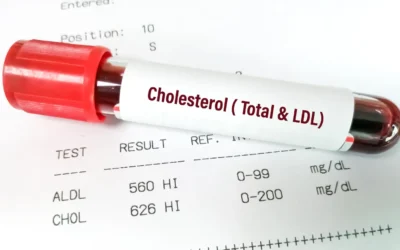In a world where cardiovascular disease remains the leading cause of death globally, the tools we use to assess risk are more important than ever. Among these tools, the coronary artery calcium (CAC) scan stands out as a quick, non-invasive, and relatively affordable test that can offer crucial insights into a person’s heart health. Despite its increasing popularity, however, the coronary calcium score is frequently misunderstood or misused—often overvalued or dismissed without proper context.
The thesis of this article is clear: The coronary artery calcium score is a powerful tool for cardiovascular risk assessment, but its interpretation is often marred by misconceptions. A more nuanced understanding of what a calcium score truly means can empower patients and clinicians alike, guiding more effective lifestyle decisions and medical strategies to combat heart disease.
Table of Contents
What Is a Coronary Artery Calcium Scan?
The coronary artery calcium scan, commonly known as a calcium score test, uses a specialized CT scan to detect and measure calcified plaque in the coronary arteries—the vessels that supply blood to the heart muscle. The result is a numerical “score” that quantifies the extent of calcification, which correlates with the burden of atherosclerotic plaque, a key contributor to heart attacks and strokes.
The scoring system is relatively straightforward:
| Calcium Score (Agatston Units) | Interpretation |
|---|---|
| 0 | No detectable calcium; low short-term risk |
| 1–99 | Mild calcium; early atherosclerosis |
| 100–399 | Moderate calcium; elevated risk |
| 400+ | Extensive calcium; high risk of events |
While these ranges provide general guidance, they don’t tell the whole story.
Myth 1: A Calcium Score of Zero Means No Heart Disease
Perhaps the most pervasive misconception is that a calcium score of zero guarantees the absence of coronary artery disease (CAD). While it’s true that a score of zero is reassuring, particularly in older individuals, it doesn’t equate to immunity.
Why? Because the CAC scan only detects calcified plaque, not non-calcified (soft) plaque, which can be equally dangerous. In younger populations, soft plaque may be present without having had time to calcify. A 2021 analysis of the Multi-Ethnic Study of Atherosclerosis (MESA) found that:
14% of individuals with obstructive CAD had a calcium score of zero, particularly in younger age groups.
Moreover, up to 30% of heart attacks in certain cohorts occurred in patients with a zero calcium score. The absence of calcium indicates a low risk in the short term, but it cannot fully rule out the presence of atherosclerosis or future events—especially when other risk factors like high LDL, smoking, or diabetes are present.
Myth 2: A Zero Calcium Score Means Zero Risk
Another dangerous oversimplification is assuming that zero calcification equals zero cardiovascular risk. While the five-to-ten-year risk of a major cardiac event is quite low (often quoted at ~1%) for individuals with a score of zero, the long-term outlook can be a different story.
Think of a calcium score of zero as an encouraging snapshot, not a lifetime guarantee. Dr. Tom Dayspring, an expert in lipidology, emphasizes that:
“A calcium score of zero indicates very low short-term risk, but says little about what will happen over the next 30 or 40 years.”
This is particularly important for younger patients, whose score of zero is not exceptional but expected. In the CARDIA study, 90% of individuals aged 36 to 42 had a score of zero. In the MESA cohort, 73% of people aged 45–54 had a zero score. Thus, in these age groups, a score of zero is the norm—not a guarantee of health.
Myth 3: You Can Wait for Your Score to Rise Before Taking Action
Some patients—and even healthcare providers—fall into the trap of using the calcium score as a trigger point for intervention, waiting for it to increase before initiating lifestyle or pharmacologic changes. But this approach is dangerously reactive.
By the time calcium appears in the arteries, the disease process is already well underway. Plaque calcification is a late-stage event in atherosclerosis. Therefore, waiting for a score to rise can mean missing the critical window for early prevention.
A better strategy is to assess risk proactively, considering family history, cholesterol levels, blood pressure, metabolic health, and other variables alongside the calcium score.
Myth 4: The Calcification Itself Causes the Problem
Another common misunderstanding is that calcium in the arteries directly causes heart attacks or strokes. In reality, calcification is a marker, not a mechanism. It signifies the body’s response to existing plaque and arterial injury.
In fact, calcified plaques are often more stable than soft plaques, which are prone to rupture—a major cause of acute coronary events. This is one reason why statins, which stabilize plaque and may increase calcium scores, actually lower the risk of cardiovascular events.
| Phenomenon | Implication |
|---|---|
| Statins increase CAC slightly | Plaque stabilization—not increased risk |
| Calcified plaques | Less likely to rupture than soft plaques |
| Soft plaques (non-calcified) | More dangerous; not visible on CAC scan |
So, while a rising calcium score may raise alarms, it’s not inherently dangerous if it’s due to plaque stabilization. Clinical context is everything.
Myth 5: A High Score Means Inevitable Doom
On the other side of the spectrum, some individuals are paralyzed by a high calcium score, believing it signals impending catastrophe. While a high score (>400) does indicate a significantly elevated risk, it also opens the door to targeted, impactful interventions.
A 2020 JACC review demonstrated that individuals with high calcium scores benefit disproportionately from statin therapy, aggressive blood pressure management, and lifestyle changes. In other words, knowledge is power—a high score is a call to action, not a death sentence.
Understanding the Calcium Score Across the Lifespan
The value of a calcium score is age-dependent. In younger adults (under 45), a score of zero is common and less informative. But a non-zero score in this group is a red flag—it suggests early-onset atherosclerosis and warrants close monitoring.
Conversely, in older adults (over 65), a score of zero is rare and very reassuring. Here, a zero score reflects not just the absence of calcified plaque, but potentially a lifetime of low atherosclerotic burden.
| Age Group | Zero Score Prevalence | Implication |
|---|---|---|
| Under 45 | High (>70%) | Zero is expected; non-zero is concerning |
| 45–65 | Moderate (40–70%) | Zero is helpful; interpretation nuanced |
| Over 65 | Low (<20%) | Zero is highly reassuring |
Understanding this gradient helps both clinicians and patients interpret results appropriately.
When Is a Calcium Scan Most Useful?
The calcium score shines in “gray zone” cases—those where traditional risk assessments (like the ASCVD calculator) don’t offer clear guidance. For example:
- A middle-aged person with borderline cholesterol who’s hesitant about starting statins
- Someone with a strong family history of early heart disease but normal current labs
- A patient already optimizing lifestyle but wanting to refine risk further
In such situations, the calcium score can serve as a tiebreaker, tilting the decision toward or away from pharmacologic intervention.
Coronary Calcium vs. CT Angiography: What’s the Difference?
While the CAC scan is a valuable screening tool, it has limitations. Notably, it misses non-calcified plaque. For more detailed visualization, CT coronary angiography (CTA) can be used. This more advanced test uses contrast dye to image both calcified and soft plaque.
However, CTA is more expensive, involves more radiation, and is typically reserved for people with symptoms or ambiguous CAC results. It’s not suitable for broad population screening due to cost and resource constraints.
Practical Advice: How to Use Your Calcium Score Wisely
If you’ve had a calcium scan—or are considering one—here are some practical takeaways:
- A score of zero is good news, especially if you’re older. But don’t use it to justify ignoring other risk factors like high ApoB or LDL cholesterol.
- A non-zero score is a motivator, not a verdict. Talk to your doctor about statins, blood pressure control, and lifestyle changes.
- Don’t chase the score with annual scans. Repeating the test every 4–5 years (or longer) is sufficient unless symptoms develop.
- Understand the limits. The calcium score doesn’t measure soft plaque, inflammation, or arterial stiffness.
- Make decisions based on context, not the number alone. Risk is multifactorial, and your score is just one piece of the puzzle.
Conclusion: Seeing the Whole Picture
The coronary artery calcium scan is a valuable tool—when used and interpreted correctly. Its strength lies in refining cardiovascular risk assessment, particularly in uncertain cases. But it’s not a crystal ball. A score of zero does not equal immunity, and a high score is not destiny. The true power of the calcium scan lies not in the number it provides, but in how that number is understood, contextualized, and acted upon.
As heart disease continues to impact millions, demystifying the calcium score can help bridge the gap between knowledge and action. By embracing a nuanced view, we equip ourselves not only with better information, but with a clearer path forward for heart health.
References
- Budoff, M. J., et al. (2018). Coronary Artery Calcium: A Clinical Practice Guideline. Journal of the American College of Cardiology, 72(4), 434-447.
- Nasir, K., et al. (2015). Coronary Artery Calcium Score to Guide Statin Therapy. JACC, 66(15), 1657-1668.
- Greenland, P., et al. (2018). Role of Coronary Artery Calcium Scoring in Cardiovascular Risk Assessment. Circulation, 138(5), e173–e199.
- Hecht, H. S. (2017). Coronary Artery Calcium Scoring: Past, Present, and Future. JACC Cardiovascular Imaging, 10(11), 1408–1411.
- Yeboah, J., et al. (2012). Coronary Artery Calcium and Risk of Cardiovascular Events in Individuals with and without Diabetes Mellitus. Diabetes Care, 35(3), 561-567.
- Blaha, M. J., et al. (2016). CAC Scoring in Risk Prediction. Journal of the American Heart Association, 5(10), e003822.





0 Comments